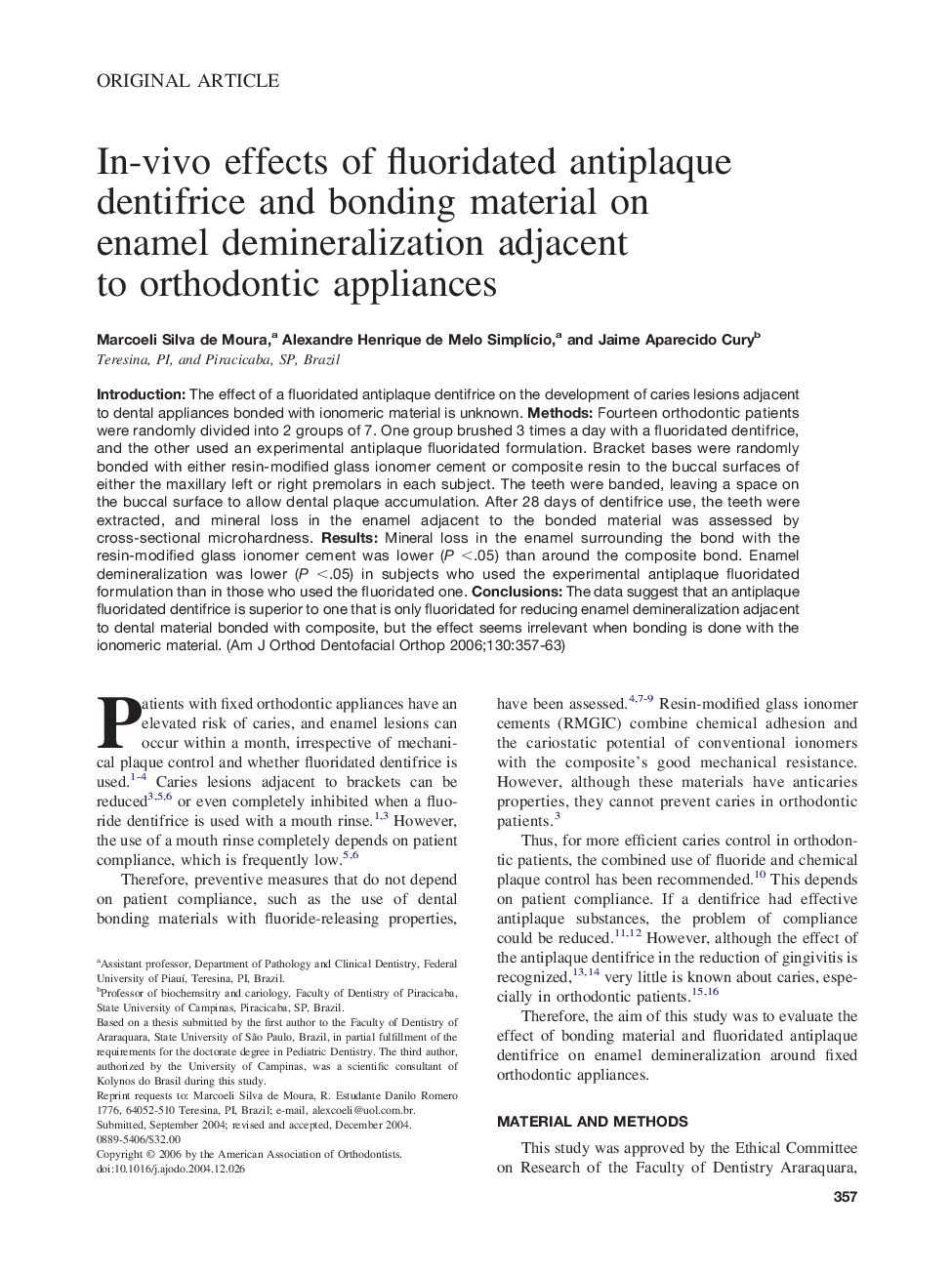| Article ID | Journal | Published Year | Pages | File Type |
|---|---|---|---|---|
| 3119512 | American Journal of Orthodontics and Dentofacial Orthopedics | 2006 | 7 Pages |
Introduction: The effect of a fluoridated antiplaque dentifrice on the development of caries lesions adjacent to dental appliances bonded with ionomeric material is unknown. Methods: Fourteen orthodontic patients were randomly divided into 2 groups of 7. One group brushed 3 times a day with a fluoridated dentifrice, and the other used an experimental antiplaque fluoridated formulation. Bracket bases were randomly bonded with either resin-modified glass ionomer cement or composite resin to the buccal surfaces of either the maxillary left or right premolars in each subject. The teeth were banded, leaving a space on the buccal surface to allow dental plaque accumulation. After 28 days of dentifrice use, the teeth were extracted, and mineral loss in the enamel adjacent to the bonded material was assessed by cross-sectional microhardness. Results: Mineral loss in the enamel surrounding the bond with the resin-modified glass ionomer cement was lower (P <.05) than around the composite bond. Enamel demineralization was lower (P <.05) in subjects who used the experimental antiplaque fluoridated formulation than in those who used the fluoridated one. Conclusions: The data suggest that an antiplaque fluoridated dentifrice is superior to one that is only fluoridated for reducing enamel demineralization adjacent to dental material bonded with composite, but the effect seems irrelevant when bonding is done with the ionomeric material.
